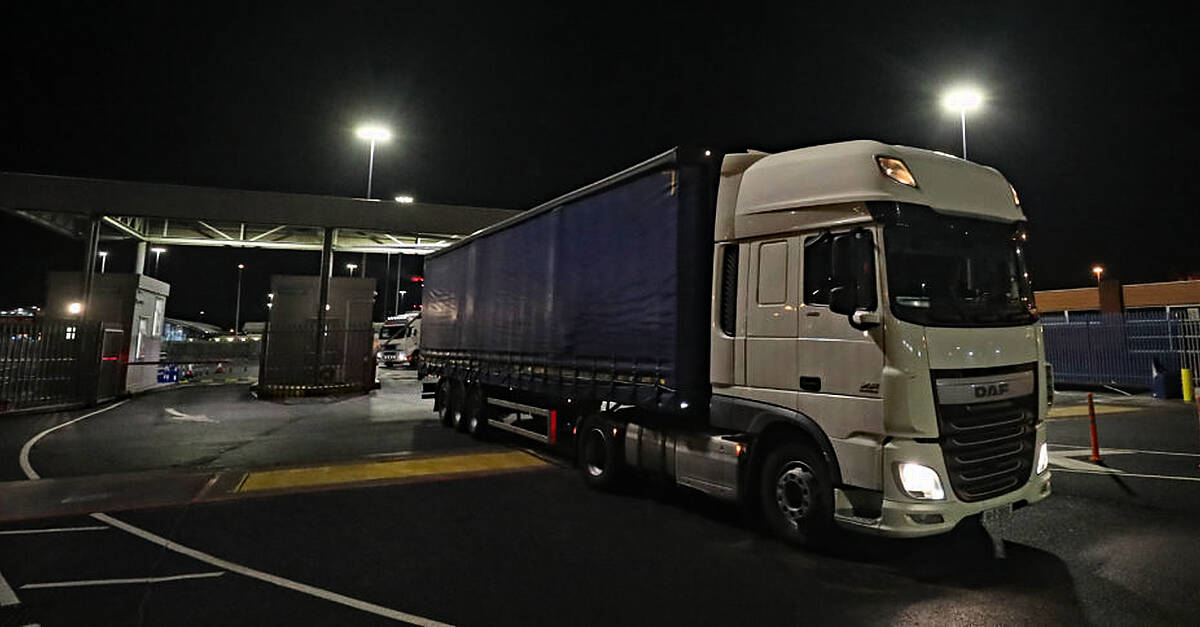
The Irish Road Haulage Association (IRHA) has called on the Government to lift the barrier at Dublin Port to improve congestion and reduce carbon emissions.
Google’s Project Air View initiative report this week found that Dublin’s air quality was “generally good” but worse on streets where traffic is bad.
IRHA president Eugene Drennan told BreakingNews.ie that lifting the barrier at Dublin Port is something that could be “done tomorrow” to further improve air quality in the city.
Trucks currently emit “two tonnes of carbon per day every time we must stop at the barrier”.
Hauliers have been calling for the barrier at Dublin Port to be lifted or amended for 20 years, Mr Drennan said.
We have been trying to get the barrier at Dublin Port lifted for 20 years.
Advertisement
“For us, it’s coming out of the tunnel and the Dublin Port area. That is the worst area for carbon in the country. We have been trying to get the barrier at Dublin Port lifted for 20 years.
“Our drivers go through tunnels throughout Europe that are tolled, but they lift automatically if you have the tag and that’s how they charge… but the one in Dublin is free.
“As we go through that tunnel our registrations are there, they have it controlled from before we go into the tunnel. They know it’s a truck that is coming, they have our registration.
“When you stop a truck fully taking off again is the biggest thrust you need of the transmission to get the speed up. You create the most carbon here.”
The full stop is such a huge creator of carbon.
Mr Drennan added that another solution would be to amend the barriers to lift automatically when a vehicle slows down to 40km/h.
“The full stop is such a huge creator of carbon,” he added.
He also called for more staggered ferry sailing times to improve traffic and carbon emissions.
“There’s between 7,000 and 11,000 trucks or heavy commercial vehicles going through the port every day. We have pleaded with the different container agencies, asking would they open an hour earlier in the morning and an hour later in the evening. They did this in some cases before Covid, these shut down after Covid and never returned to the same operating times.
Advertisement
“This was more so to do with trying to push all the work into the hours around staff levelling, with little thought about creating carbon and the free flow of traffic in Dublin Port and the city.
“We have spoken at length with the different bodies to try and get the sailing times of ferries changed ever so slightly, even half an hour or an hour apart, because you have four ferries leaving Dublin at once… they arrive in between 5am and 6am.
“The people from those ferries is the start of the logjam of bigger traffic. They arrive in within an hour, and there are trucks going to get on and trucks getting off, and they all collide.
“If there was just a bit of spacing put on ferry times leaving and arriving it would have a great impact in freeing up traffic in Dublin, carbon creation in Dublin Port, and it would improve the supply line to Ireland. The ferry companies have failed to do that, especially since Brexit. “
Mr Drennan said a lack of protocol around the days following port closures due to wind causes “mayhem”.
“These items need to a bit of an adjustment, and it would be brilliant for carbon in Dublin, the logjam of traffic in Dublin, and port operations in Dublin.”
There are tunnels all over Europe without these issues.
Mr Drennan said a recent discussion on the barrier issue with Transport Infrastructure Ireland (TII) saw the body commit to “have something up and running by the start of 2024”.
“When you hear that it really means 2026, but in the meantime it can be done tomorrow morning. There are tunnels all over Europe without these issues.
“If they want to talk about carbon… free up Dublin Port traffic, there will be a lot less carbon created.”











